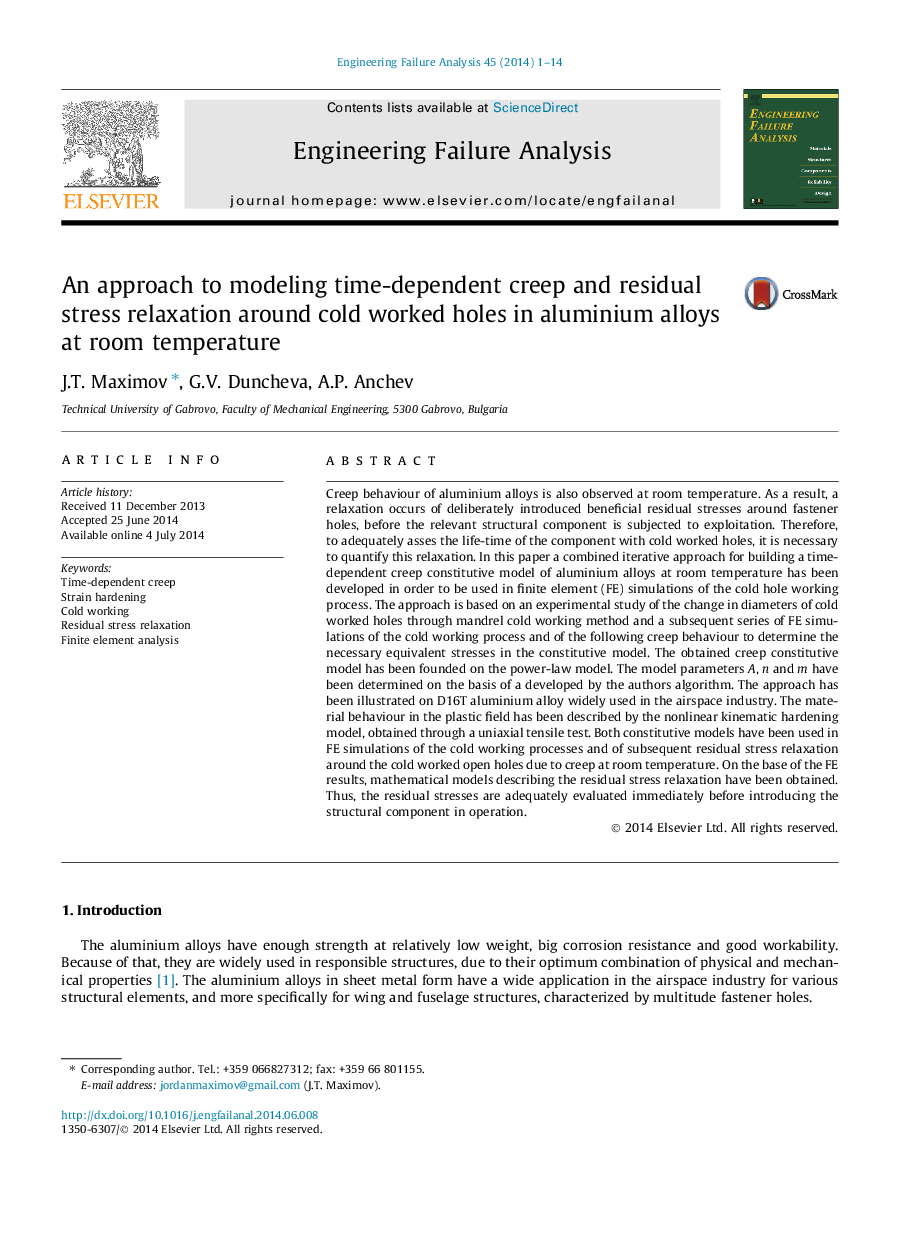| Article ID | Journal | Published Year | Pages | File Type |
|---|---|---|---|---|
| 769593 | Engineering Failure Analysis | 2014 | 14 Pages |
•An approach to building time-dependent creep constitutive model is developed.•The approach includes an experiment and a subsequent iterative numerical analysis.•The creep constitutive model is used in finite element analysis of cold hole work.•Residual stress relaxation due to creep at room temperature is studied.•A mathematical model describing the residual stress relaxation is obtained.
Creep behaviour of aluminium alloys is also observed at room temperature. As a result, a relaxation occurs of deliberately introduced beneficial residual stresses around fastener holes, before the relevant structural component is subjected to exploitation. Therefore, to adequately asses the life-time of the component with cold worked holes, it is necessary to quantify this relaxation. In this paper a combined iterative approach for building a time-dependent creep constitutive model of aluminium alloys at room temperature has been developed in order to be used in finite element (FE) simulations of the cold hole working process. The approach is based on an experimental study of the change in diameters of cold worked holes through mandrel cold working method and a subsequent series of FE simulations of the cold working process and of the following creep behaviour to determine the necessary equivalent stresses in the constitutive model. The obtained creep constitutive model has been founded on the power-law model. The model parameters A, n and m have been determined on the basis of a developed by the authors algorithm. The approach has been illustrated on D16T aluminium alloy widely used in the airspace industry. The material behaviour in the plastic field has been described by the nonlinear kinematic hardening model, obtained through a uniaxial tensile test. Both constitutive models have been used in FE simulations of the cold working processes and of subsequent residual stress relaxation around the cold worked open holes due to creep at room temperature. On the base of the FE results, mathematical models describing the residual stress relaxation have been obtained. Thus, the residual stresses are adequately evaluated immediately before introducing the structural component in operation.
